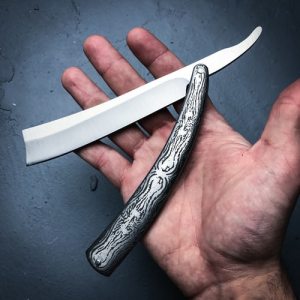Sadistic Pleasure and Demon Barbering
Excerpt
Stephen Banfield comes close to describing the violent pleasures of theatre-going when he says that “live theater, especially in a piece such as Sweeney Todd, is in any case a kind of S and M contract, actors and technicians having to submit to, command, and trust each other in deadly earnest if a performance is to come off without lethal mishap.” The erotically charged pleasures of S/M seem to me an odd frame for thinking about stage technicians and performers (theirs is essentially a relationship of laborers working together), but it is perhaps an excellent way to think about the relationship between the audience and the performers onstage.
Sweeney Todd, it is true, is in the business of cultivating audiences who enjoy watching acts of brutality, witnessing slashed throats, and chuckling while unsuspecting diners gobble down pies filled with minced human flesh. But Sondheim and Wheeler’s melodrama also takes pains to point out the causes of that violence, and the show’s cannibalism is designed as a provocation and a point of discussion, not merely a disgusting plot twist. What these newsmedia reports make clear is that audiences and critics, whether they’re watching Sweeney Todd or not, are, at least in part, out for blood.
Sondheim and Wheeler only rarely eroticize the violence in Sweeney Todd. The relationship that the show creates between sexual desire and violence is complex and intriguing, but the story I’ve been telling in this essay is one in which audience members attend a tale of dismemberment and violence and are asked in turn to recognize both the violence of their own societies and the incoherence of their own selves. Sweeney’s audiences are not simply permitted to enjoy the sadistic pleasure of witnessing a set of fictional murders.



